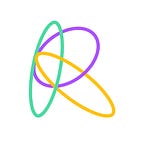Worst Programming Languages You Can Learn in 2023
Programming languages are the lifeblood of the tech industry, allowing developers to build incredible applications and systems. However, not all languages are created equal. Some programming languages can be a nightmare for programmers due to their complexities, limitations, and unpopularity in the tech world. In this article, we take a deep dive into the five programming languages that are arguably the worst to learn in 2023.
1. COBOL: The Ancient Giant
COBOL, an acronym for Common Business-Oriented Language, was designed in the late 1950s. It was a revolutionary tool for its time, designed to handle business data processing. However, as the tech world evolved, COBOL lagged, making it one of the worst programming languages for modern-day programmers.
COBOL’s strength lies in its ability to handle legacy systems that have been running for decades. Many large organizations still rely on COBOL for critical business operations. However, given its outdated nature, finding programmers proficient in COBOL is challenging, leading to compatibility and maintenance issues.
COBOL presents a steep learning curve for beginners, with its verbose syntax and unconventional coding style. The difficulty in learning and maintaining COBOL code can be a significant barrier for programmers seeking to master this language.
2. Brainfuck: The Mind-Bender
Brainfuck stands as an example of an esoteric programming language, designed to challenge and amuse programmers. With its minimalist design of only eight simple commands, this language is a formidable beast to tame, making it one of the worst programming languages for practical use.
At its core, Brainfuck operates on a tape, a one-dimensional array of memory cells. The programmer manipulates the values in these cells using the eight commands. Understanding and effectively utilizing this unique system requires a significant mental shift and a bucket load of patience.
Ironically, the simplicity of Brainfuck is its greatest challenge. Writing even a basic program can be a grueling task due to its extreme simplicity and condensed syntax. The lack of readability makes Brainfuck inaccessible for most programmers, especially beginners.
3. INTERCAL: Programming with a Twist
INTERCAL, short for Compiler Language With No Pronounceable Acronym, is a programming language designed to be as confusing and unreadable as possible. It was created as a parody, intentionally challenging conventional programming practices.
INTERCAL is a perfect example of an esoteric programming language. It uses bizarre syntax, such as “PLEASE” and “DO NOT,” to make the language intentionally difficult to understand and maintain. Programming in INTERCAL is more like solving a cryptic puzzle than writing usable code.
INTERCAL encourages the use of unpredictable elements, including unconventional variable names and random program behaviour. These elements add another layer of complexity and confusion for programmers, making INTERCAL a challenging language to work with.
4. Malbolge: The Programmer’s Nightmare
Malbolge holds the reputation for being one of the most difficult programming languages ever devised. It was deliberately designed to make writing programs nearly impossible, making it a tough challenge for even the most experienced programmers.
Malbolge is known for its extremely convoluted syntax, intricate encoding, and being intentionally unintelligible It uses self-modifying code, where the program changes itself as it executes. This principle adds an extra layer of complexity, making it one of the worst programming languages to learn.
In most programming languages, the “Hello, World!” program is a simple and straightforward task. However, in Malbolge, it took developers two years to create a functioning “Hello, World!” program, highlighting the mind-bending complexities and sheer difficulty of this language.
5. Whitespace: The Invisible Code
Whitespace is a programming language where code is written using only whitespace characters such as spaces, tabs, and line breaks. It completely ignores any non-whitespace characters, making it a uniquely challenging language to work with.
In Whitespace, the actual code is invisible, consisting only of whitespace characters. This means that programmers need to carefully structure the code using spaces, tabs, and line breaks to achieve the desired functionality. Even the smallest error in whitespace formatting can lead to program failure.
Despite its challenges, Whitespace has attracted a small community of enthusiasts who view it as an artistic expression of programming. This unconventional language demonstrates that creativity knows no bounds, even when constrained by invisible characters.
Conclusion
While all programming languages have their place in the tech world, some are undoubtedly more challenging and less practical than others. Whether it’s due to outdated syntax, purposeful complexity, or unconventional design, these five languages: COBOL, Brainfuck, INTERCAL, Malbolge, and Whitespace, are arguably the worst programming languages to learn in 2023.
For programmers, the key is to focus on learning and mastering languages that are widely used in the industry, have a robust community, and offer a wealth of resources for learning and problem-solving. Regardless of the language you choose, remember that the goal is to create efficient, reliable, and maintainable code that solves real-world problems. Happy coding!
Till next time
-Team @ Remobi-
